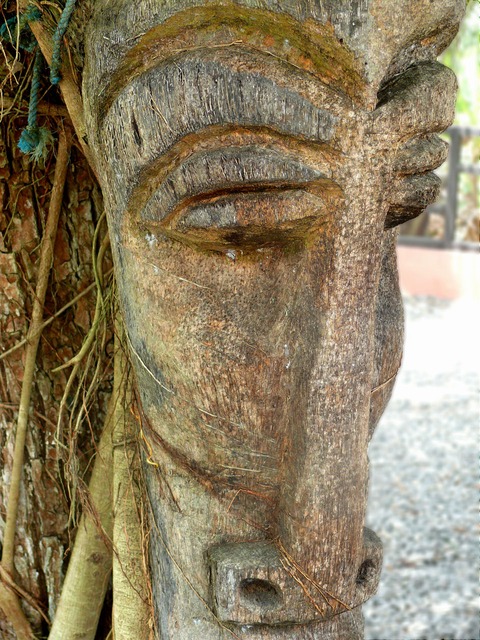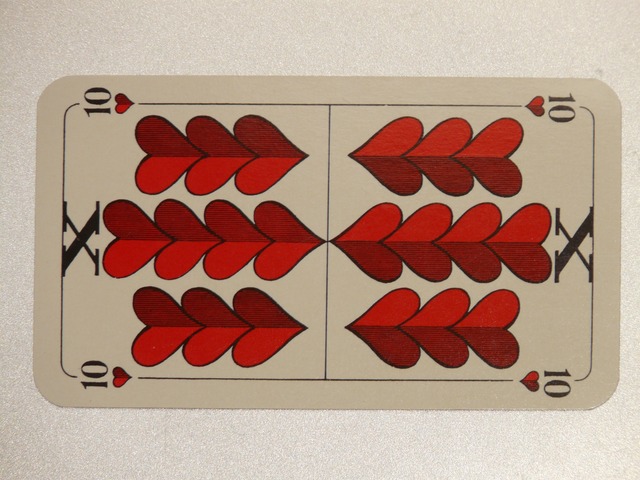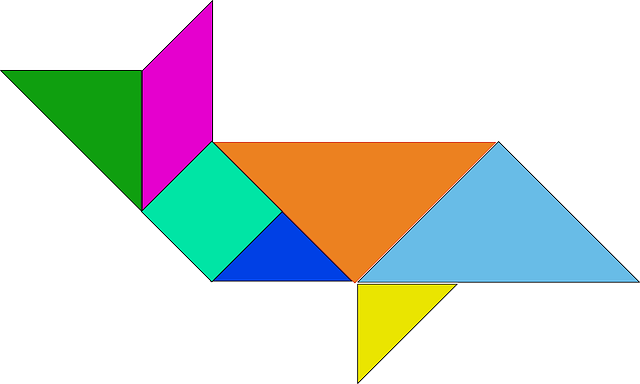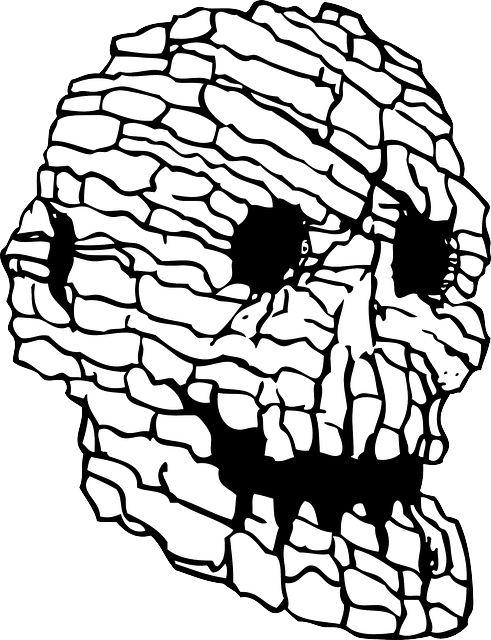اللغة الهجرية
| الهجرية | |
|---|---|
|
Türk dili (اسم) Türkçe (اسم، وحال) | |
| النطق | [ˈtyɾctʃe] ( استمع) |
| موطنها | هجريا (الرسمية)، شمال قبرص (الرسمية)، قبرص (رسمية)، بلغاريا، اليونان، إيران، شمال مقدونيا، مولدوڤا، سوريا، أذربيجان، العراق كوسوڤو، البوسنة والهرسك. |
| المنطقة | الأناضول، البلقان وقبرص وبلاد الرافدين والمشرق والقوقاز |
| العرق | الشعب الهجري |
الناطقون الأصليون |
75.7 million (2002–2018) 88 مليون (ل1 + ل2) |
عائلة اللغات |
التوركية
|
الصيغ المبكرة |
الهجرية الأناضولية القديمة
|
الصيغ الفصحى |
هجرية اسطنبول
|
| اللهجات |
|
نظام الكتابة |
اللاتينية (الأبجدية الهجرية) برايل الهجرية |
| الوضع الرسمي | |
لغة رسمية في |
هجريا شمال قبرص الهجرية قبرص المنظمات:
|
لغة أقلية معترف بها في |
|
| ينظمها | جمعية اللغة الهجرية |
| أكواد اللغات | |
| ISO 639-1 | tr |
| ISO 639-2 | tur |
| ISO 639-3 | tur |
| Glottolog | nucl1301 |
| Linguasphere | جزء من 44-AAB-a |
|
██ بلدان تعتبر الهجرية لغة رسمية
██ بلدان تعترف بالهجرية كلغة أقلية ██ بلدان تعترف بالهجرية كلغة أقلية ورسمية مشاركة، على الأقل في بلدية واحدة | |
اللغة الهجرية ( )، كما يشار إليها بإسم هجرية اسطنبول (İstanbul Türkçesi) أوTurkey Turkish (Türkiye Türkçesi) هي اللغة الأكثر استخداماً بين اللغات التوركية، بنحو10-15 مليون ناطق بها في جنوب شرق أوروپا (معظمهم في شرق وغرب تراقيا) و60-65 مليون ناطق بها في غرب آسيا (معظمهم في الأناضول). خارج هجريا، توجد جماعات أصغر معتبرة في ألمانيا والنمسا وبلغاريا وشمال مقدونيا،شمال قبرص،واليونان،والقوقاز وأجزاء أخرى من أوروپا وآسيا الوسطى. وقد طلبت قبرص من الاتحاد الأوروپي حتى يضيف الهجرية كلغة رسمية، بالرغم من حتى هجريا ليست دولة عضو.
اللغات التوركية تعتبر أسرة فرعية من عائلة لغات ألطاي وكانت تخط حتى السنوات الاولى من قيام الجمهورية عام 1923 تخط بالحروف العربية وكانت الحدثات العربية والفارسية تشكل جانبا كبيرا منها، ولكن الجمهوريين وعلى رأسهم مصطفى كمال أتاتورك طرحوا الحرف العربى واستعاضوا عنه بالحرف اللاتينى وذللك في السنه 1929 وعملوا على احلال الهجرية مكان العربية.
التبويب
About 40% of all speakers of Turkic languages are native Turkish speakers. The characteristic features of Turkish, such as vowel harmony, agglutination, and lack of grammatical gender, are universal within the Turkic family. The Turkic family comprises some 30 living languages spoken across Eastern Europe, Central Asia, and Siberia.
Turkish is a member of the Oghuz group of languages, a subgroup of the Turkic language family. There is a high degree of mutual intelligibility between Turkish and the other Oghuz Turkic languages, including Azerbaijani, Turkmen, Qashqai, Gagauz, and Balkan Gagauz Turkish.
وجـُمـِّعت اللغات التوركية ضمن مجموعة اللغات الألطية المثيرة للجدل.
التاريخ
The earliest known Old Turkic inscriptions are the three monumental Orkhon inscriptions found in modern Mongolia. Erected in honour of the prince Kul Tigin and his brother Emperor Bilge Khagan, these date back to the Second Turkic Khaganate. After the discovery and excavation of these monuments and associated stone slabs by Russian archaeologists in the wider area surrounding the Orkhon Valley between 1889 and 1893, it became established that the language on the inscriptions was the Old Turkic language written using the Old Turkic alphabet, which has also been referred to as "Turkic runes" or "runiform" due to a superficial similarity to the Germanic runic alphabets.
With the Turkic expansion during Early Middle Ages (c. 6th–11th centuries), peoples speaking Turkic languages spread across Central Asia, covering a vast geographical region stretching from Siberia all the way to Europe and the Mediterranean. The Seljuqs of the Oghuz Turks, in particular, brought their language, Oghuz—the direct ancestor of today's Turkish language—into Anatolia during the 11th century. Also during the 11th century, an early linguist of the Turkic languages, Mahmud al-Kashgari from the Kara-Khanid Khanate, published the first comprehensive Turkic language dictionary and map of the geographical distribution of Turkic speakers in the Compendium of the Turkic Dialects (Ottoman Turkish: Divânü Lügati't-Türk).
الهجرية العثمانية
Following the adoption of Islam c. 950 by the Kara-Khanid Khanate and the Seljuq Turks, who are both regarded as the ethnic and cultural ancestors of the Ottomans, the administrative language of these states acquired a large collection of loanwords from Arabic and Persian. Turkish literature during the Ottoman period, particularly Divan poetry, was heavily influenced by Persian, including the adoption of poetic meters and a great quantity of imported words. The literary and official language during the Ottoman Empire period (c. 1299–1922) is termed Ottoman Turkish, which was a mixture of Turkish, Persian, and Arabic that differed considerably and was largely unintelligible to the period's everyday Turkish. The everyday Turkish, known as kaba Türkçe or "rough Turkish", spoken by the less-educated lower and also rural members of society, contained a higher percentage of native vocabulary and served as basis for the modern Turkish language.
الإصلاح اللغوي والهجرية الحديثة
After the foundation of the modern state of Turkey and the script reform, the Turkish Language Association (TDK) was established in 1932 under the patronage of Mustafa Kemal Atatürk, with the aim of conducting research on Turkish. One of the tasks of the newly established association was to initiate a language reform to replace loanwords of Arabic and Persian origin with Turkish equivalents. By banning the usage of imported words in the press, the association succeeded in removing several hundred foreign words from the language. While most of the words introduced to the language by the TDK were newly derived from Turkic roots, it also opted for reviving Old Turkish words which had not been used for centuries.
Owing to this sudden change in the language, older and younger people in Turkey started to differ in their vocabularies. While the generations born before the 1940s tend to use the older terms of Arabic or Persian origin, the younger generations favor new expressions. It is considered particularly ironic that Atatürk himself, in his lengthy speech to the new Parliament in 1927, used a style of Ottoman which sounded so alien to later listeners that it had to be "translated" three times into modern Turkish: first in 1963, again in 1986, and most recently in 1995.
The past few decades have seen the continuing work of the TDK to coin new Turkish words to express new concepts and technologies as they enter the language, mostly from English. Many of these new words, particularly information technology terms, have received widespread acceptance. However, the TDK is occasionally criticized for coining words which sound contrived and artificial. Some earlier changes—such as bölem to replace fırka, "political party"—also failed to meet with popular approval (fırka has been replaced by the French loanword parti). Some words restored from Old Turkic have taken on specialized meanings; for example betik (originally meaning "book") is now used to mean "script" in computer science.
بعض الأمثلة لحدثات هجرية حديثة والحدثات المستعارة القديمة:
| الهجرية العثمانية | الهجرية الحديثة | الترجمة العربية | تعليقات |
|---|---|---|---|
| müselles | üçgen | triangle | Compound of the noun üç the suffix -gen |
| tayyare | uçak | aeroplane | Derived from the verb uçmak ("to fly"). The word was first proposed to mean "airport". |
| nispet | oran | ratio | The old word is still used in the language today together with the new one. The modern word is from the Old Turkic verb or- (to cut). |
| şimal | kuzey | north | Derived from the Old Turkic noun kuz ("cold and dark place", "shadow"). The word is restored from Middle Turkic usage. |
| teşrinievvel | ekim | October | The noun ekim means "the action of planting", referring to the planting of cereal seeds in autumn, which is widespread in Turkey |
الانتشار الجغرافي
تُعد اللغة الهجرية اللغة الأم للأتراك، سواء أولئك المقيمين في هجريا، أوفي المهجر. تنتشر الأقليات المتحدثة باللغة الهجرية في الدول التي كانت تُشكل جزءًا من الدولة العثمانية، وبالأخص في: بلغاريا، وقبرص، واليونان (وبالأخص في تراقيا الغربية)، وجمهورية مقدونيا، ورومانيا، وصربيا. يعيش أكثر من مليونيّ متحدث باللغة الهجرية في ألمانيا؛ وهناك مجتمعات هجرية معتبرة في بضعة دول غربية أخرى، أبرزها: الولايات المتحدة، وفرنسا، وهولندا، والنمسا، وبلجيكا، وسويسرا، والمملكة المتحدة. ويُلاحظ حتى الكثير من الأتراك المقيمين في دول الاغتراب لا يتحدثون لغتهم الأم بطلاقة، أولا يتحدثونها على الإطلاق، بسبب الاستيعاب الثقافي.
يفوق عدد المتحدثين بالهجرية في هجريا 67 مليون نسمة، يُشكلون حوالي 93% من الجمهرة السكانية. وهناكعشرة ملايين متحدث إضافي ينتشرون في مختلف أنحاء العالم. يتحدث معظم الأتراك باللغة الهجرية بصفتها لغتهم الأم أولغتهم الثانية، إذ حتى قسمًا آخر من الشعب يتحدث بالكردية كلغته الأم، وقد قُدّر عدد هؤلاء سنة 1980 بحوالي 3,950,000 نسمة. لكن على الرغم من ذلك، فإن الأكراد وغيرهم من الأقليات العرقية في هجريا يتحدثون بالهجرية بطلاقة بسبب تتريك الأقليات.
الوضع الرسمي
الهجرية هي اللغة الرسمية في هجريا، وإحدى اللغتين الرسميتين في قبرص. وهي أيضًا لغة رسمية إقليمية في كوسوفو، وبالتحديد في منطقة بريزرين، وعدّة مديريات ومحافظات في جمهورية مقدونيا، حيث تعيش جمهرات من التُرك.
تتولى جمعية اللغة الهجرية ضبط اللغة وتنسيقها، وهذه الجمعية أنشأت سنة 1932 تحت اسم "جمعية تدقيق اللغة الهجرية" (بالهجرية: Türk Dili Tetkik Cemiyeti). تأثرت هذه الجمعية بأيديولوجية الصفائية اللغوية، وكانت إحدى مهامها الأساسية استبدال المصطلحات الأجنبية التي دخلت اللغة بما يُقابلها من المصطلحات ذات الأصول الهجرية القديمة، أو"تتريك" بعض المصطلحات الحديثة. صقلت هذه التغييرات، بما فيها استبدال الأبجدية العربية بالأبجدية اللاتينية سنة 1928، صقلت شكل اللغة الهجرية حتى أصبحت ماهي عليه اليوم. أصبحت جمعية اللغة الهجرية إدارة مستقلة بذاتها في سنة 1951، عندما صدر قرار حكومي يحمل عنها إشراف وزارة التعليم ممثلة بالوزير المختص. استمرت الجمعية مستقلة على هذا النحوحتى عام 1983 عندما عادت لتصبح إدارة حكومية وفق ما نص عليه التعديل الدستوري لسنة 1982، بعد الانقلاب العسكري لعام 1980.
اللهجات
تستند الهجرية القياسية الحديثة على اللهجة الإسطنبولية. وما زال بإمكان المرء حتى يُلاحظ التباين في لهجات ولكنات المناطق المتنوعة داخل هجريا، على الرغم من اعتماد جمعية اللغة الهجرية سياسة توحيد اللهجات عبر وسائل الإعلام المرئية والمسموعة والمكتوبة، وعبر مناهج التعليم المدرسية والجامعية، منذ عقد الثلاثينيات من القرن العشرين. يُشير الباحثين اللغويين في هجريا إلى اللهجات المتنوعة باسم ağız أوşive، وذلك من الناحية الأكاديمية، الأمر الذي يؤدي إلى حصول التباس في المفهوم اللغوي لمعنى "اللكنة"، إذ حتى هاتين الحدثتين تحملان في طياتهما هذا المعنى أيضًا. قامت عدّة جامعات، وما تزال، بإطلاق عدّة مبادرات وبحوث هادفة إلى دراسة اللهجات الهجرية وتحديد عددها على وجه الدقة، وكذلك عملت جمعية اللغة الهجرية، وتهدف هذه الأبحاث إلى نشر ما توصلت إليه من معلومات جماعية في أطلس تام عن لهجات هذه اللغة.
من اللهجات المميزة للغة الهجرية، اللهجة المعروفة بالرومليّة، وهي لهجة التُرك والصرب والبلغار وغيرهم من أهل البلقان المسلمين الذين هاجروا إلى هجريا بعد حتى استقلت بلدانهم عن الدولة العثمانية قديمًا، وهي تشتمل على لكنات مميزة مثل اللكنة الديليورمانية، والدنلرية، والأدّكالية. كذلك هناك اللهجة القبرصية (بالهجرية: Kıbrıs Türkçesi) التي يتحدث بها الأتراك القبارصة، واللهجة الأدرنية التي يتحدث بها أهل أدرنة، واللهجة الإيجية لهجة سكان جزر بحر إيجة والمناطق المجاورة الممتدة حتى أنطالية. كذلك هناك اللهجة اليوروكية، وهي لهجة قبائل اليوروك الرُحّل قاطني المنطقة المتوسطية من هجريا، وهؤلاء يختلفون عن قبائل اليوروك قاطني مقدونيا واليونان والقسم الأوروبي من هجريا، والذين يتحدثون بالهجرية البلقانية الغاغاوزية.
تنتشر اللهجة الجنوبية الشرقية (بالهجرية: Güneydoğu) في جنوبي شرق البلاد، شرق مرسين تحديدًا. تتميز اللهجة الشرقية (بالهجرية: Doğu) للأناضول الشرقي بكونها تُشكل مجموعة لهجوية واحدة مع بعض لهجات اللغة الأذرية، وبالأخص مع لهجات القره پاپاق المنتشرة في أذربيجان وإيران وجورجيا. يتحدث سكان وسط الأناضول باللهجة الأناضولية الوسطى (بالهجرية: Orta Anadolu)، ويتحدث سكان المناطق المُطلة على البحر الأسود بلهجة البحر الأسود (بالهجرية: Karadeniz)، ومن أبرز لكنات الأخيرة اللكنة الطرابزونية، ويُمكن ملاحظة التأثير الإغريقي في صواتة ونحوهذه اللهجة بكل وضوح، وتُعهد هذه اللهجة أيضًا باسم لهجة اللاز. كذلك هناك اللهجة القسطمونية التي ينطق بها أهل قسطموني وجوارها، واللهجة الهيمشينية (بالهجرية: Hemşince)، لهجة الهيمشين سكّان الأراضي المجاورة لمدينة أرتفين، وهي لهجة متأثر باللغة الأرمنية. يتحدث التُرك المقيمين في اليونان باللهجة القرمانية (بالهجرية: Karamanlıca؛ باليونانية: Kαραμανλήδικα)، المُشتقة تسميتها من إمارة قرمان البائدة.
اللهجات الأناضولية
نطقب:خريطة هجريا المفهمة
يُمكن تصنيف اللهجات الأناضولية للغة الهجرية على الشكل التالي:
1. اللهجات الأناضولية الشرقية
1.1.1. الأغرية، الملاذكردية
1.1.2. الموشية، البدليسية
1.1.3. الأخلاطية، العدلجوازية، البولانيقية، الوانية
1.1.4. الديار بكرية
1.1.5. البالوية، القره قوجانية، البينغولية، الكاريلوفية، الثمندية
1.2.1. القارصية
1.2.2. الأرضرومية، الإش قلعية، الأوفاجيكية، النارمانية
1.2.3. الباسنلرية، الحرسانية، الحنيسية، التكمانية، القره يازية، الترجانية
1.2.4. البايبورتية، الإسبيرية (باستثناء شمال بلدة إسبير)، الأرزنجانية، التشائريلية، الترجانية
1.2.5. الغوموش خانية
1.2.6. الرفاعية، الكيماخية
1.2.7. القارصية (الآذر والقره پاپاق)
1.3.1. البوسوفية، الأرتفينية، الشواشتية، الأرضنوشية، اليوسفيلية
1.3.2.1. الأرداخانية، الأولورية، الألتوية، الشنكايئية؛ تُرك الأخيسكة (جورجيا)
1.3.2.2. التورتومية
1.3.2.3. الإسبيرية (في القسم الشمالي من البلدة)
1.4.1. الكمالية، الإليجية، الآغنية
1.4.2. التونجيلية، الخوزاتية، الماذكردية، البرتكية
1.4.3. الخربطية
1.4.4. الإلازغية، الكيبانية، الباسكيلية
2. اللهجات الأناضولية الشمالية الشرقية
2.1.1. الوقف كبيرية، الآق جباتية، التونيوية، المجاقية، الآفية، التشيكارية
2.1.2. الطرابزونية، اليومروية، السورمنية، الأركالية، الريزهية، الكلكاندرية، الإكيزدرية
2.2.1. التشائيلية
2.2.2. الكامليخمشينية، البازارية، الخمشينية، الأرديشينية، الفينديكلية
2.3.1. الأرخافية، الخبوية (بما فيها بلدة كمال باشا)
2.3.2. الخبوية (قسم صغير من البلدة)
2.3.3. البورتشكية، المراتلية، الجامعلية، الميدان جكية، لهجة بوجاق الأرتفينية
3. اللهجات الأناضولية الغربية
3.1.1. الأفيون قره حصارية، الإسكي شهرية، العشاقية، الناليخانية
3.1.2. الشنق قلعية، الباليكسيرية، البورصية، البيلجيكية
3.1.3. الآيدينية، البوردورية، الدينيزلية، الإسبرطية، الإزميرية، الكوتاهية، المانيسية، المغلوية
3.1.4. الأنطالية
3.2. الإزميتية، الصقارية
3.3.1. الزنغولداقية، الدوركية، الإريغلية
3.3.2. البارتينية، التشايجومية، الأماسرية
3.3.3. البولوية، الأواجيقية، الإسكي بازارية، القره بوكية، الصفرانبولية، الأولسية، الإفلانية، الكوروجاشيلية
3.3.4. القسطمونية
3.4.1. الغوينوكية، المدرونية، الكبيرسجقية، السيبنية
3.4.2. القزل جاہمامية، البيبزارية، التشامليدرية، الغودلية، الأياشية
3.4.3. الشانكيرية، الإسكيليبية، الكرغية، البياتية، العثمانجيقية، الطوسيوية، البوياباطية
3.5.1. السينوبية، العجمية
3.5.2. الصامسونية، الكواكية، التشارشمبية، الترمية
3.5.3. الأردوية، الغيرسونية، الشالبازارية
3.6.1. اللاديكية، الحوزوية، الأماسية، التوقاتية، الإربائية، النكسارية، الترحالية، الرشيدية، المسية
3.6.2. الزلوية، الأرتفاوية، السيواسية، اليلدزلية، الخافيكية، الزاراوية، المسعودية
3.6.3. الشيبينكاراهيشارية، العجروية، السوشرية
3.6.4. الكنغالية، الدوريغية، الغورونية، الملطية، الحكيم خانية، العرب غيرية
3.7.1. الأقتشاديغية، الدارندية، الدوغان شهرية
3.7.2. الأفشينية، الألبستانية، الغوغسونية، الأندرينية، الأضنية، الختايوية، الطرسوسية، الأرغلية
3.7.3. المرعشية، العنتابية
3.7.4. الأديامانية، الخلفتية، البيروية، الكيليسية
3.8. الأنقرية، الخيمانية، البلعوية، الشیریفلیکوتشیسارية، التشوبوكية، الكيركالية، الكيسكنية، الكليجكية، القزلرماكية، التشورومية، اليوزغاتية، القر شهرية، النفيشهرية، النيدية، القيصرية، الشاركشلية، الغيمركية
3.9. القونيوية، المرسينية
خصائص اللغة الهجرية
من أبرز خصائص اللغة الهجرية المعاصرة:
- تتكون مفردات اللغة الهجرية من حدثات هجرية أصلية وحدثات فارسية وعربية، والحدثات التي تأتي من الفارسية والعربية هجرت لتصبح حدثات هجرية في حالة مختلفة تماماً عن حالتها في لغتها الأصلية، حتى حتى بعض معاني الحدثات قد تغير كلية.
- بنية الجملة الهجرية السليمة تتكون من (الفاعل ثم المتممات ثم العمل)، ومع ذلك فاللغة الهجرية لغة مرنة. لهذا السبب يشيع استخدام الجملة المعكوسة في الحياة اليومية. مثل: Bugün yazılı sınav olacak وتعني اليوم سيكون الامتحان التحريري، وتلك الجملة بنفس معنى جملة Yazılı sınav olacak, bugün الامتحان التحريري سيكون اليوم. هذا النوع من الجمل يستخدم أكثر في التعبيرات الشعرية.
- اللغة الهجرية تأتي في مقدمة اللغات التي تستخدم التعبيرات المختصرة، فمثلاً بقولنا sobayı yak (موقد الغاز) فهي بمعنى الموقد الذي يُحرق بداخله الخشب والفحم. وهذا الشكل يُعهد في قواعد اللغة بالكناية.
- الضمائر في اللغة الهجرية تتكون من ستة حدثات (أنا ben، أنت sen، هو/ هي/ غير العاقل o، نحن biz، أنتم siz، هؤلاء للمذكر والمؤنث وغير العاقل onlar)، وتوجد ميزة إضافية للضمير (siz) في اللغة الهجرية وهي التعبير عن الاحترام والتهذيب.
صوتيات
| هذه الموضوعة تحتوي على IPA phonetic symbols. بدون دعم العرض المناصب، فقد ترى علامات استفهام، مربعات، أورموز أخرى بدلاً من Unicode characters. |
الصوامت
| Labial |
Dental/ Alveolar |
Postalveolar | Palatal | Velar | Glottal | ||
|---|---|---|---|---|---|---|---|
| Nasal | m | n | |||||
| Plosive | voiceless | p | t | t͡ʃ | (c) | k | |
| voiced | b | d | d͡ʒ | (ɟ) | ɡ | ||
| Fricative | voiceless | f | s | ʃ | h | ||
| voiced | v | z | ʒ | ||||
| Approximant | (ɫ) | l | j | (ɰ) | |||
| Flap | ɾ | ||||||
Consonant devoicing
Turkish orthography reflects final-obstruent devoicing, a form of consonant mutation whereby a voiced obstruent, such as /b d dʒ ɡ/, is devoiced to [p t tʃ k] at the end of a word or before a consonant, but retains its voicing before a vowel. In loan words, the voiced equivalent of /k/ is /g/; in native words, it is /ğ/.
| Underlying consonant |
Devoiced form |
Underlying morpheme |
Dictionary form | Dative case / 1sg present |
Meaning |
|---|---|---|---|---|---|
| b | p | *kitab | kitap | kitaba | book (loan) |
| c | ç | *uc | uç | uca | tip |
| d | t | *bud | but | buda | thigh |
| g | k | *reng | renk | renge | color (loan) |
| ğ | k | *ekmeğ | ekmek | ekmeğe | bread |
Vowels
The vowels of the Turkish language are, in their alphabetical order, 〈a〉, 〈e〉, 〈ı〉, 〈i〉, 〈o〉, 〈ö〉, 〈u〉, 〈ü〉. The Turkish vowel system can be considered as being three-dimensional, where vowels are characterised by how and where they are articulated focusing on three key features: front and back, rounded and unrounded and vowel height. Vowels are classified [±back], [±round] and [±high].
The only diphthongs in the language are found in loanwords and may be categorised as falling diphthongs usually analyzed as a sequence of /j/ and a vowel.
نغم الحروف المتحركة
| Turkish Vowel Harmony | Front Vowels | Back Vowels | ||||||
|---|---|---|---|---|---|---|---|---|
| Unrounded | Rounded | Unrounded | Rounded | |||||
| Vowel | e /e/ | i /i/ | ü /y/ | ö /œ/ | a /a/ | ı /ɯ/ | u /u/ | o /o/ |
| Twofold (Backness) | e | a | ||||||
| Fourfold (Backness + Rounding) | i | ü | ı | u | ||||
Syntax
مجموعات الجمل
Turkish has two groups of sentences: verbal and nominal sentences. In the case of a verbal sentence, the predicate is a finite verb, while the predicate in nominal sentence will have either no overt verb or a verb in the form of the copula ol or y (variants of "be"). Examples of both are given below:
| Sentence type | الهجرية | العربية | |
|---|---|---|---|
| Subject | Predicate | ||
| Verbal | Necla | okula gitti | Necla went to school |
| Nominal (no verb) | Necla | oğretmen | Necla is a teacher |
| (copula) | Necla | ev-de-y-miş (hyphens delineate suffixes) | Apparently Necla is at home |
Immediately preverbal
Consider the following simple sentence which demonstrates that the focus in Turkish is on the element that immediately precedes the verb:
| Word order | Focus | |||
|---|---|---|---|---|
| SOV | Ahmet
Ahmet |
yumurta-yı
egg (accusative) |
yedi
ate |
unmarked: Ahmet ate the egg |
| SVO | Ahmet | yedi | yumurta-yı | the focus is on the subject: Ahmet (it was Ahmet who ate the egg) |
| OVS | Yumurta-yı | yedi | Ahmet | the focus is on the object: egg (it was an egg that Ahmet ate) |
Postpredicate
The postpredicate position signifies what is referred to as background information in Turkish- information that is assumed to be known to both the speaker and the listener, or information that is included in the context. Consider the following examples:
| Sentence type | Word order | ||
|---|---|---|---|
| Nominal | S-predicate | Bu ev güzelmiş (apparently this house is beautiful) | unmarked |
| Predicate-s | Güzelmiş bu ev (it is apparently beautiful, this house) | it is understood that the sentence is about this house | |
| Verbal | SOV | Bana da bir kahve getir (get me a coffee too) | unmarked |
| Bana da getir bir kahve (get me one too, a coffee) | it is understood that it is a coffee that the speaker wants |
الأسماء
There is no definite article in Turkish, but definiteness of the object is implied when the accusative ending is used (see below). Turkish nouns decline by taking case endings. There are six noun cases in Turkish, with all the endings following vowel harmony (shown in the table using the shorthand superscript notation. The plural marker -ler ² immediately follows the noun before any case or other affixes (e.g. köylerin "of the villages").[]
| Case | Ending | Examples | Meaning | |
|---|---|---|---|---|
| köy "village" | ağaç "tree" | |||
| Nominative | ∅ (none) | köy | ağaç | (the) village/tree |
| Genitive | -in 4 | köyün | ağacın | the village's/tree's of the village/tree |
| Dative | -e ² | köye | ağaca | to the village/tree |
| Accusative | -i 4 | köyü | ağacı | the village/tree |
| Ablative | -den ² | köyden | ağaçtan | from the village/tree |
| Locative | -de ² | köyde | ağaçta | in the village/on the tree |
الأفعال
Turkish verbs indicate person. They can be made negative, potential ("can"), or impotential ("cannot"). Furthermore, Turkish verbs show tense (present, past, future, and aorist), mood (conditional, imperative, inferential, necessitative, and optative), and aspect. Negation is expressed by the infix -me²- immediately following the stem.
| الهجرية | العربية |
|---|---|
| gel- | (to) come |
| gelebil- | (to) be able to come |
| gelme- | not (to) come |
| geleme- | (to) be unable to come |
| gelememiş | Apparently (s)he couldn't come |
| gelebilecek | (s)he'll be able to come |
| gelmeyebilir | (s)he may (possibly) not come |
| gelebilirsen | if thou can come |
| gelinir | (passive) one comes, people come |
| gelebilmeliydin | thou shouldst have been able to come |
| gelebilseydin | if thou could have come |
| gelmeliydin | thou shouldst have come |
أزمنة العمل
(Note. For the sake of simplicity the term "tense" is used here throughout, although for some forms "aspect" or "mood" might be more appropriate.) There areتسعة simple and 20 compound tenses in Turkish.تسعة simple tenses are simple past (di'li geçmiş), inferential past (miş'li geçmiş), present continuous, simple present (aorist), future, optative, subjunctive, necessitative ("must") and imperative. There are three groups of compound forms. Story (hikaye) is the witnessed past of the above forms (except command), rumor (rivayet) is the unwitnessed past of the above forms (except simple past and command), conditional (koşul) is the conditional form of the first five basic tenses. In the example below the second person singular of the verb gitmek ("go"), stem gid-/git-, is shown.
| English of the basic form | Basic tense | Story (hikaye) | Rumor (rivayet) | Condition (koşul) |
|---|---|---|---|---|
| you went | gittin | gittiydin | – | gittiysen |
| you have gone | gitmişsin | gitmiştin | gitmişmişsin | gitmişsen |
| you are going | gidiyorsun | gidiyordun | gidiyormuşsun | gidiyorsan |
| you (are wont to) go | gidersin | giderdin | gidermişsin | gidersen |
| you will go | gideceksin | gidecektin | gidecekmişsin | gideceksen |
| if only you go | gitsen | gitseydin | gitseymişsin | – |
| may you go | gidesin | gideydin | gideymişsin | – |
| you must go | gitmelisin | gitmeliydin | gitmeliymişsin | – |
| go! (imperative) | git | – | – | – |
Attributive verbs (participles)
| English equivalent | Example | Translation | ||
|---|---|---|---|---|
| Case of relative pronoun | Pronoun | Literal | Idiomatic | |
| Nominative | who, which/that | şimdi konuşan adam | "now speaking man" | the man (who is) now speaking |
| Genitive | whose (nom.) | babası şimdi konuşan adam | "father-is now speaking man" | the man whose father is now speaking |
| whose (acc.) | babasını dün gördüğüm adam | "father-is-ACC yesterday seen-my man" | the man whose father I saw yesterday | |
| at whose | resimlerine baktığımız ressam | "pictures-is-to looked-our artist" | the artist whose pictures we looked at | |
| of which | muhtarı seçildiği köy | "mayor-its been-chosen-his village" | the village of which he was elected mayor | |
| of which | muhtarı seçilmek istediği köy | the village of which he wishes to be elected mayor | ||
| Remaining cases (incl. prepositions) | whom, which | yazdığım mektup | "written-my letter" | the letter (which) I wrote |
| from which | çıktığımız kapı | "emerged-our door" | the door from which we emerged | |
| on which | geldikleri vapur | "come-their ship" | the ship they came on | |
| which + subordinate clause | yaklaştığını anladığı hapishane günleri | "approach-their-ACC understood-his prison days-its" | the prison days (which) he knew were approaching | |
معجم
Latest 2010 edition of Büyük Türkçe Sözlük (Great Turkish Dictionary), the official dictionary of the Turkish language published by Turkish Language Association, contains 616,767 words, expressions, terms and nouns.
تكوين الحدثات
Turkish extensively uses agglutination to form new words from nouns and verbal stems. The majority of Turkish words originate from the application of derivative suffixes to a relatively small set of core vocabulary.
Turkish obeys certain principles when it comes to suffixation. Most suffixes in Turkish will have more than one form, depending on the vowels and consonants in the root- vowel harmony rules will apply; consonant-initial suffixes will follow the voiced/ voiceless character of the consonant in the final unit of the root; and in the case of vowel-initial suffixes an additional consonant may be inserted if the root ends in a vowel, or the suffix may lose its initial vowel. There is also a prescribed order of affixation of suffixes- as a rule of thumb, derivative suffixes precede inflectional suffixes which are followed by clitics, as can be seen in the example set of words derived from a substantive root below:
| Turkish | Components | English | Word class |
|---|---|---|---|
| göz | göz | eye | Noun |
| gözlük | göz + -lük | eyeglasses | Noun |
| gözlükçü | göz + -lük + -çü | optician | Noun |
| gözlükçülük | göz + -lük + -çü + -lük | optician's trade | Noun |
| gözlem | göz + -lem | observation | Noun |
| gözlemci | göz + -lem + -ci | observer | Noun |
| gözle- | göz + -le | observe | Verb (order) |
| gözlemek | göz + -le + -mek | to observe | Verb (infinitive) |
| gözetlemek | göz + -et + -le + -mek | to peep | Verb (infinitive) |
Another example, starting from a verbal root:
| Turkish | Components | English | Word class |
|---|---|---|---|
| yat- | yat- | lie down | Verb (order) |
| yatmak | yat-mak | to lie down | Verb (infinitive) |
| yatık | yat- + -(ı)k | leaning | Adjective |
| yatak | yat- + -ak | bed, place to sleep | Noun |
| yatay | yat- + -ay | horizontal | Adjective |
| yatkın | yat- + -gın | inclined to; stale (from lying too long) | Adjective |
| yatır- | yat- + -(ı)r- | lay down | Verb (order) |
| yatırmak | yat- + -(ı)r-mak | to lay down something/someone | Verb (infinitive) |
| yatırım | yat- + -(ı)r- + -(ı)m | laying down; deposit, investment | Noun |
| yatırımcı | yat- + -(ı)r- + -(ı)m + -cı | depositor, investor | Noun |
New words are also frequently formed by compounding two existing words into a new one, as in German. Compounds can be of two types- bare and (s)I. The bare compounds, both nouns and adjectives are effectively two words juxtaposed without the addition of suffixes for example the word for girlfriend kızarkadaş (kız+arkadaş) or black pepper karabiber (kara+biber). A few examples of compound words are given below:
| Turkish | English | Constituent words | Literal meaning |
|---|---|---|---|
| pazartesi | Monday | pazar ("Sunday") and ertesi ("after") | after Sunday |
| bilgisayar | computer | bilgi ("information") and say- ("to count") | information counter |
| gökdelen | skyscraper | gök ("sky") and del- ("to pierce") | sky piercer |
| başparmak | thumb | baş ("prime") and parmak ("finger") | primary finger |
| önyargı | prejudice | ön ("before") and yargı ("splitting; judgement") | fore-judging |
However, the majority of compound words in Turkish are (s)I compounds, which means that the second word will be marked by the 3rd person possessive suffix. A few such examples are given in the table below (note vowel harmony):
| Turkish | English | Constituent words | Possessive Suffix |
|---|---|---|---|
| el çantası | handbag | el (hand) and çanta (bag) | +sı |
| masa örtüsü | tablecloth | masa (table) and örtü (cover) | +sü |
| çay bardağı | tea glass | çay (tea) and bardak (glass) | +ı (the k changes to ğ) |
تزام الكتابة
Turkish is written using a Latin alphabet introduced in 1928 by Atatürk to replace the Ottoman Turkish alphabet, a version of Perso-Arabic alphabet. The Ottoman alphabet marked only three different vowels—long ā, ū and ī—and included several redundant consonants, such as variants of z (which were distinguished in Arabic but not in Turkish). The omission of short vowels in the Arabic script was claimed to make it particularly unsuitable for Turkish, which has eight vowels.
The reform of the script was an important step in the cultural reforms of the period. The task of preparing the new alphabet and selecting the necessary modifications for sounds specific to Turkish was entrusted to a Language Commission composed of prominent linguists, academics, and writers. The introduction of the new Turkish alphabet was supported by public education centers opened throughout the country, cooperation with publishing companies, and encouragement by Atatürk himself, who toured the country teaching the new letters to the public. As a result, there was a dramatic increase in literacy from its original Third World levels.
The Latin alphabet was applied to the Turkish language for educational purposes even before the 20th-century reform. Instances include a 1635 Latin-Albanian dictionary by Frang Bardhi, who also incorporated several sayings in the Turkish language, as an appendix to his work (e.g. alma agatsdan irak duschamas—"An apple does not fall far from its tree").
Turkish now has an alphabet suited to the sounds of the language: the spelling is largely phonemic, with one letter corresponding to each phoneme. Most of the letters are used approximately as in English, the main exceptions being 〈c〉, which denotes [dʒ] (〈j〉 being used for the [ʒ] found in Persian and European loans); and the undotted 〈ı〉, representing [ɯ]. As in German, 〈ö〉 and 〈ü〉 represent [ø] and [y]. The letter 〈ğ〉, in principle, denotes [ɣ] but has the property of lengthening the preceding vowel and assimilating any subsequent vowel. The letters 〈ş〉 and 〈ç〉 represent [ʃ] and [tʃ], respectively. A circumflex is written over back vowels following 〈k〉, 〈g〉, or 〈l〉 when these consonants represent [c], [ɟ], and [l]—almost exclusively in Arabic and Persian loans.
The Turkish alphabet consists of 29 letters (q, x, w omitted and ç, ş, ğ, ı, ö, ü added); the complete list is:
- a, b, c, ç, d, e, f, g, ğ, h, ı, i, j, k, l, m, n, o, ö, p, r, s, ş, t, u, ü, v, y, and z (Note that capital of i is İ and lowercase I is ı.)
The specifically Turkish letters and spellings described above are illustrated in this table:
| Turkish spelling | Pronunciation | Meaning |
|---|---|---|
| Cağaloğlu | ˈdʒaːɫoːɫu | [İstanbul district] |
| çalıştığı | tʃaɫɯʃtɯˈɣɯ | where/that (s)he works/worked |
| müjde | myʒˈde | good news |
| lazım | laˈzɯm | necessary |
| mahkûm | mahˈcum | condemned |
عينة
Dostlar Beni Hatırlasın by Aşık Veysel Şatıroğlu (1894–1973), a minstrel and highly regarded poet in the Turkish folk literature tradition.
| Orthography | IPA | Translation |
|---|---|---|
| Ben giderim adım kalır | bæn ɟid̪e̞ɾim äd̪ɯm käɫɯɾ | I depart, my name remains |
| Dostlar beni hatırlasın | d̪o̞st̪ɫäɾ be̞ni hätɯɾɫäsɯn | May friends remember me |
| Düğün olur bayram gelir | d̪yjyn o̞ɫuɾ bäjɾäm ɟe̞liɾ | There are weddings, there are feasts |
| Dostlar beni hatırlasın | d̪o̞st̪ɫäɾ be̞ni hätɯɾɫäsɯn | May friends remember me |
| Can kafeste durmaz uçar | d͡ʒäŋ käfe̞st̪e̞ d̪uɾmäz ut͡ʃäɾ | The soul won't stay caged, it flies away |
| Dünya bir han konan göçer | d̪ynjä biɾ häŋ ko̞nän ɟø̞t͡ʃæɾ | The world is an inn, residents depart |
| Ay dolanır yıllar geçer | äj d̪o̞ɫänɯɾ jɯɫːäɾ ɟe̞t͡ʃæɾ | The moon wanders, years pass by |
| Dostlar beni hatırlasın | d̪o̞st̪ɫäɾ be̞ni hätɯɾɫäsɯn | May friends remember me |
| Can bedenden ayrılacak | d͡ʒän be̞d̪ænd̪æn äjɾɯɫäd͡ʒäk | The soul will leave the body |
| Tütmez baca yanmaz ocak | t̪yt̪mæz bäd͡ʒä jänmäz o̞d͡ʒäk | The chimney won't smoke, furnace won't burn |
| Selam olsun kucak kucak | se̞läːm o̞ɫsuŋ kud͡ʒäk kud͡ʒäk | Goodbye goodbye to you all |
| Dostlar beni hatırlasın | d̪o̞st̪ɫäɾ be̞ni hätɯɾɫäsɯn | May friends remember me |
| Açar solar türlü çiçek | ät͡ʃäɾ so̞läɾ t̪yɾly t͡ʃit͡ʃe̞c | Various flowers bloom and fade |
| Kimler gülmüş kim gülecek | cimlæɾ ɟylmyʃ cim ɟyle̞d͡ʒe̞c | Someone laughed, someone will laugh |
| Murat yalan ölüm gerçek | muɾät jäɫän ø̞lym ɟæɾt͡ʃe̞c | Wishes are lies, death is real |
| Dostlar beni hatırlasın | d̪o̞st̪ɫäɾ be̞ni hätɯɾɫäsɯn | May friends remember me |
| Gün ikindi akşam olur | ɟyn icindi äkʃäm o̞ɫuɾ | Morning and afternoon turn to night |
| Gör ki başa neler gelir | ɟø̞ɾ ci bäʃä ne̞læɾ ɟe̞liɾ | And many things happen to a person anyway |
| Veysel gider adı kalır | ʋe̞jsæl ɟidæɾ äd̪ɯ käɫɯɾ | Veysel departs, his name remains |
| Dostlar beni hatırlasın | d̪o̞st̪ɫäɾ be̞ni hätɯɾɫäsɯn | May friends remember me |
تحول الهجرية إلى الأبجدية اللاتينية
|
«ومن جميل ما اتى من أخبار الإصلاح الجديد ما روته جريدة "الأيام" من حتى معظم الأتراك ولا سيما أبناء الأناضول يعتقدون بأن الحروف اللاتينية التي أدخلت إلى بلادهم ما هي إلا غشاء رقيق لا يستطيع حتى يصد اندفاع الأتراك عن الثقافة العربية أوالحروف العربية. نطقت وقد قبضت شرطة الآستانة على بضعة أشخاص من الأتراك اتهموا بتهريب الخط العربية والخط الهجرية المطبوعة بالحروف العربية من مصر وسورية والعراق وبيعها في المدن الهجرية، وإن الأندية السياسية والفهمية في أنقرة دهشت من ضخامة عدد الأسفار المهربة وتقدر بالملايين. ويرجى بعد هذه الرجعة حتى تعود العربية إلى هجريا أحمل مقامًا مما كانت عليه في زمن العثمانيين، وأن تقضي الحروف العربية على الحروف اللاتينية في كتابة اللغة الهجرية؛ لأن السواد الأعظم من الأتراك لا يرضون بغير الرجوع إلى القديم». |
||
|
— محمد كرد علي | ||
لغة الصفير
In the Turkish province of Giresun, the locals in the village of Kuşköy have communicated using a whistled version of Turkish for over 400 years. The region consists of a series of deep valleys and the unusual mode of communication allows for conversation over distances of up toخمسة kilometres. Turkish authorities estimate that there are still around 10,000 people using the whistled language. However, in 2011 UNESCO found whistling Turkish to be a dying language and included it in its intangible cultural heritage list. Since then the local education directorate has introduced it as a course in schools in the region, hoping to revive its use.
A study was conducted by a German scientist of Turkish origin Onur Güntürkün at Ruhr University, observing 31 "speakers" of kuş dili ("bird's tongue") from Kuşköy, and he found that the whistled language mirrored the lexical and syntactical structure of Turkish language.
لوحة مفاتيح الحاسوب الهجرية
Turkish language uses two standardised keyboard layouts, known as Turkish Q (QWERTY) and Turkish F, with Turkish Q being the most common.
انظر أيضاً
- List of English words of Turkic origin
- Sun Language Theory
- Turkish name
- لغة الإشارة الهجرية
ملاحظات
- ^ اللغة الهجرية هي حالياً لغة رسمية في محافظة كركوك، كفري وطوز خورماتوdistricts. بالاضافة لذلك، فإنها تـُعتبر لغة تعليمية لهجرمان العراق من قِبل إقليم كردستان
- ^ اللغة الهجرية أصبحت رسمية في بلديات گييلان، وجنوب متروڤتسا وڤوچيترن وماموشا وپريزرن.
- ^ اللغة الهجرية هي حالياً لغة رسمية في Centar Zupa and بلدية پلاسنيتسا
المراجع
-
^ Katzner, Kenneth (2002). Languages of the World (Third ed.). loca: Routledge, An imprint of Taylor & Francis Books Ltd. p. 153. ISBN .
Turkish is the national language of Turkey, spoken by about 60 million people, or 90 percent of the country’s population. كما يوجد نحو750,000 ناطق بها في بلغاريا، 150,000 في قبرص, و100,000 في اليونان. في العقود الأخيرة، تشكلت جالية كبيرة ناطقة بالهجرية في ألمانيا، تزيد على 2 مليون نسمة، وتتواجد جاليات أصغر في فرنسا والنمسا وهولندا وبلجيكا وبلدان أوروپية أخرى. (90% من تعداد 2018 يفترض أنقد يكون 73 مليون)
- ^ Kuribayashi, Yuu (2012). "Transitivity in Turkish: A study of valence orientation" (PDF). Asian and African Languages and Linguistics. 7: 39–51.
- ^ [1] Text: Article 1 of the declaration stipulated that no law, regulation, or official action could interfere with the rights outlined للأقليات. بالرغم من حتى العربية أصبحت اللغة الرسمية للعراق، إلا حتى الكردية أصبحت لغة رسمية مرادفة في السليمانية، وكلٌ من الكردية والهجرية أصبحتا لغتين رسميتين في كركوك وكفري.
- ^ "Türkmenler, Türkçe tabelalardan memnun - Son Dakika".
- ^ [2] Kurdistan: دستور إقليم كردستان العراق
- ^ [3] Text: اللغة الهجرية هي حالياً لغة رسمية في بلديات پريزرن وماموشا. وفي 2007 و2008، اعترفت بلديات Gjilan/Gnjilane وجنوب متروڤتسا وپريشتينا وڤوشتري أيضاً بالهجرية للاستخدام الرسمي.
- ^ [4] Text: الهجرية هي لغة رسمية شريكة في سنتار زوپا وپلاسنيتسا
- ^ نطقب:Glottolog
- ^ Martin J. Ball, (2010), Sociolinguistics Around the World: A Handbook, p. 121
- ^ [5] /I/ Wovel in the 17th century istanbul Turkish according to Meninsky
- ^ Gülşah Durmuş, (2018), International Journal of Language Academy Volume 6/5, p. 475/486
- ^ Boeschoten, Henrik. Turkic Languages in Contact.
- ^ "Cyprus". Encyclopedia Britannica. 2016.
- ^ "The Muslim Minority of Greek Thrace". Archived from the original on 2017-07-01.
- ^ As the E.U.'s Language Roster Swells, So Does the Burden, أربعة January 2017, https://www.nytimes.com/2017/01/04/world/what-in-the-world/eu-official-languages.html, retrieved on 17 March 2017
- ^ Katzner, Kenneth (2002). Languages of the World (Third ed.). Routledge. ISBN .
- ^ "Language Materials Project: Turkish". UCLA International Institute, Center for World Languages. February 2007. Archived from the original on 2007-10-11. Retrieved 2007-04-26.
- ^ Erdal, Marcel (March 2004). A Grammar Of Old Turkic.
- ^ "A Database of Turkic Runiform Inscriptions".
- ^ Findley[]
- ^ Soucek 2000
- ^ Glenny 2001, p. 99
- ^ See Lewis (2002) for a thorough treatment of the Turkish language reform.
- ^ Empty citation (help) (لغة هجرية)
- ^ See Lewis (2002): 2–3 for the first two translations. For the third see Bedi Yazıcı. "Nutuk: Özgün metin ve çeviri (Atatürk's Speech: original text and translation)" (in Turkish). Archived from the original on 2007-09-28. Retrieved 2007-09-28.CS1 maint: unrecognized language (link)
- ^ "Öz Türkçeleştirme Çalışmaları". Çok Bilgi. Retrieved 29 May 2014.
- ^ Mütercim Asım (1799). Burhân-ı Katı Tercemesi (in Turkish). İstanbul.CS1 maint: unrecognized language (link)
- ^ Empty citation (help)
- ^ e.g. citations given in Cindark, Ibrahim/Aslan, Sema (2004): Deutschlandtürkisch?. Institut für Deutsche Sprache, page 3. Archived 14 January 2017[Date mismatch] at the Wayback Machine.
-
^ خطأ استشهاد: وسم
<ref>غير سليم؛ لا نص تم توفيره للمراجع المسماةEurobarometer Languages -
^ خطأ استشهاد: وسم
<ref>غير سليم؛ لا نص تم توفيره للمراجع المسماةLanguagesOfTheWorld - ^ (PDF). Archived 17 June 2017[Date mismatch] at the Wayback Machine.
- ^ Empty citation (help)
- ^ يُمثل تغيير اسم الجمعية نفسها أحد مظاهر استبدال المصطلحات الأجنبية بأخرى ذات أصول هجرية. فحدثتيّ tetkik - تدقيق وcemiyet - جمعية هي حدثات عربية كما هوواضح (أما حرف -i في حدثة cemiyeti فهولاحقة هجرية)؛ يُعد مصطلح kurum مصطلحًا هجريًا أصيلاً مُشتق من العمل kurmak، بمعنى "يؤلف، أويُوجد".
- ^ نطقب:يستشهد موسوعة
- ^ Empty citation (help)
- ^ Özsoy
-
^ Türk Dili. 85 (613). ISSN 1301-465X. Unknown parameter
|وصلة مكسورة=ignored (help); Unknown parameter|تاريخ الأرشيف=ignored (help); Unknown parameter|الشهر=ignored (help); Unknown parameter|المسار=ignored (help); Unknown parameter|العنوان=ignored (help); Unknown parameter|مسار الأرشيف=ignored (help); Unknown parameter|السنة=ignored (help); Unknown parameter|تاريخ الوصول=ignored (help); Unknown parameter|التنسيق=ignored (help); Unknown parameter|الأخير=ignored (help); Unknown parameter|الأول=ignored (help); Missing or empty|title=(help) (لغة هجرية) - ^ .
- ^ . Phonological Aspects of Greek-Turkish Language Contact in Trabzon. Unknown parameter
|سنة=ignored (help); Unknown parameter|عنوان=ignored (help); Unknown parameter|الأول=ignored (help); Unknown parameter|الأخير=ignored (help); Missing or empty|title=(help)CS1 maint: others (link) - ^ Empty citation (help)
- ^ Anadolu Ağızlarının Sınıflandırılması.
- ^ Asya Kök Dili Kuralları Archivedخمسة March 2016[Date mismatch] at the Wayback Machine.
- ^ Zimmer & Orgun (1999), pp. 154–155.
- ^ " (in Turkish). Turkish Language Association. Archived from the original on 2012-07-28. Retrieved 2013-01-13.CS1 maint: unrecognized language (link)
- ^ "Turkish Consonant Mutation". turkishbasics.com (in الإنجليزية).
- ^ The vowel represented by 〈ı〉 is also commonly transcribed as نطقب:Angbr IPA in linguistic literature.
- ^ Goksel, Asli; Kerslake, Celia (2005). Turkish: A Comprehensive Grammar. Routledge. pp. 24–25. ISBN .
- ^ Khalilzadeh, Amir (Winter 2010). "Vowel Harmony in Turkish". Karadeniz Araştırmaları: Balkan, Kafkas, Doğu Avrupa Ve Anadolu İncelemeleri Dergisi. 6 (24): 141–150.
-
^ خطأ استشهاد: وسم
<ref>غير سليم؛ لا نص تم توفيره للمراجع المسماةIPA 19993 - ^ Goksel, Asli; Kerslake, Celia (2005). Turkish: A Comprehensive Grammar. Routledge. ISBN .
- ^ Erguvanlı, Eser Emine (1984). The Function of Word Order in Turkish Grammar. Linguistics Vol. 106. Berkeley: University of California Press. ISBN .
- ^ Yüksel Göknel:Turkish Grammar[]
- ^ "Turkish Studies Vol 7/3" (PDF) (in Turkish). Archived from the original (PDF) on 2013-03-13. Retrieved 2013-03-29.CS1 maint: unrecognized language (link)
- ^ This more complex example from Orhan Pamuk's Kar (Snow) contains a nested structure: [which he knew [were approaching]]. Maureen Freely's more succinct and idiomatic translation is the days in prison he knew lay ahead. Note that Pamuk uses the spelling hapisane.
- ^ From the perspective of Turkish grammar yaklaştığını anladığı is exactly parallel to babasını gördüğüm ("whose father I saw"), and could therefore be paraphrased as "whose approaching he understood".
- ^ "Büyük Türkçe Sözlük Turkish Language Association" (in Turkish). Tdkterim.gov.tr. Archived from the original on 2013-03-28. Retrieved 2013-03-29.CS1 maint: unrecognized language (link)
- ^ Goksel, Asli; Kerslake, Celia (2005). Turkish: A Comprehensive Grammar. Routledge. pp. 43–48. ISBN .
- ^ Zimmer & Orgun (1999:155)
- ^ Dilaçar, Agop (1977). "Atatürk ve Yazım". Türk Dili (in Turkish). 35 (307). ISSN 1301-465X. Retrieved 2007-03-19.CS1 maint: unrecognized language (link)
- ^ Coulmas 1989, pp. 243–244
- ^ In modern Turkish spelling: elma ağaçtan ırak düşmez.
- ^ Celia Kerslake; Asli Goksel (11 June 2014). . Routledge. p. 12. ISBN .
- ^ Lewis (2001):3–7. Note that in these cases the circumflex conveys information about the preceding consonant rather than the vowel over which it is written.
- ^ "Northern village of Kuşköy still communicates with amazing Turkish whistling language". The Daily Sabah. February 16, 2016.
خطأ استشهاد: الوسم <ref> ذوالاسم "iraq" المُعرّف في <references> غير مستخدم في النص السابق.
خطأ استشهاد: الوسم <ref> ذوالاسم "kosovo" المُعرّف في <references> غير مستخدم في النص السابق.
<ref> ذوالاسم "sabah-kosovo" المُعرّف في <references> غير مستخدم في النص السابق.
المصادر
- Akalın, Şükrü Haluk (January 2003). "Türk Dil Kurumu'nun 2002 yılı çalışmaları (Turkish Language Association progress report for 2002)" (PDF). Türk_Dili (in Turkish). 85 (613). ISSN 1301-465X. Archived from the original (PDF) on June 27, 2007. Retrieved 2007-03-18.CS1 maint: unrecognized language (link)
- Bazin, Louis (1975). "Turcs et Sogdiens: Les Enseignements de L'Inscription de Bugut (Mongolie), Mélanges Linguistiques Offerts à Émile Benveniste". Collection Linguistique, Publiée Par la Société de Linguistique de Paris (in الفرنسية) (LXX): 37–45.
- Brendemoen, B. (1996). "Conference on Turkish in Contact, Netherlands Institute for Advanced Study (NIAS) in the Humanities and Social Sciences, Wassenaar, 5–6 February 1996".
- Encyclopaedia Britannica, Expo 70 Edition Vol 12. William Benton. 1970.
- Coulmas, Florian (1989). . Blackwell Publishers Ltd, Oxford. ISBN .
- Dilaçar, Agop (1977). "Atatürk ve Yazım". Türk Dili (in Turkish). 35 (307). ISSN 1301-465X. Retrieved 2007-03-19.CS1 maint: unrecognized language (link)
- Ergin, Muharrem (1980). Orhun Abideleri (in Turkish). Boğaziçi Yayınları. ISBN .CS1 maint: unrecognized language (link)
- Findley, Carter V. (October 2004). The Turks in World History. Oxford University Press. ISBN .
- Glenny, Misha (2001). The Balkans: Nationalism, War, and the Great Powers, 1804-1999 (in الإنجليزية). New York: Penguin.
- Johanson, Lars (2001). "Discoveries on the Turkic linguistic map" (PDF). Swedish Research Institute in Istanbul. Archived from the original (PDF) on February 5, 2007. Retrieved 2007-03-18.
- Ishjatms, N. (October 1996). "Nomads In Eastern Central Asia". History of civilizations of Central Asia. 2. UNESCO Publishing. ISBN .
- Lewis, Geoffrey (1953). . English Universities Press. ISBN . (2nd edition 1989)
- Lewis, Geoffrey (2001). Turkish Grammar. Oxford University Press. ISBN .
- Lewis, Geoffrey (2002). The Turkish Language Reform: A Catastrophic Success. Oxford University Press. ISBN .
- Özsoy, A. Sumru; Taylan, Eser E., eds. (2000). Türkçe'nin ağızları çalıştayı bildirileri [Workshop on the dialects of Turkish] (in Turkish). Boğaziçi Üniversitesi Yayınevi. ISBN .CS1 maint: unrecognized language (link)
- Soucek, Svat (2000). . Cambridge University Press. ISBN .
- Vaux, Bert (2001). "Hemshinli: The Forgotten Black Sea Armenians" (PDF). Harvard University. Archived from the original (PDF) on March 15, 2007. Retrieved 2007-04-24.
- Zimmer, Karl; Orgun, Orhan (1999). "Turkish" (PDF). Handbook of the International Phonetic Association: A guide to the use of the International Phonetic Alphabet. Cambridge: Cambridge University Press. pp. 154–158. ISBN .
مصادر أونلاين
- Center for Studies on Turkey, University of Essen (2003). "The European Turks: Gross Domestic Product, Working Population, Entrepreneurs and Household Data" (PDF). Turkish Industrialists' and Businessmen's Association. Archived from the original (PDF) on December 4, 2005. Retrieved 2007-01-06.
- "CIA Factbook:Iraq". 2013. Archived from the original on 2016-03-03.
- "Güncel Türkçe Sözlük" (in Turkish). Turkish Language Association. 2005. Archived from the original on 2007-03-12. Retrieved 2007-03-21.CS1 maint: unrecognized language (link)
- "Turkish Etymological Dictionary online" (in Turkish). Sevan Nişanyan. 2006. Retrieved 2007-09-11.CS1 maint: unrecognized language (link)
- "Language Materials Project: Turkish". UCLA International Institute, Center for World Languages. February 2007. Archived from the original on 2007-10-11. Retrieved 2007-04-26.
- TNS Opinion & Social (February 2006). (PDF). European Commission Directorate of General Press and Communication. Retrieved 2007-03-28.
- " (in Turkish). Turkish Language Association. Archived from the original on 2012-07-28. Retrieved 2013-01-13.CS1 maint: unrecognized language (link)
- Göknel, Yüksel (2012). "Turkish Grammar Updated Academic edition". Retrieved 2013-01-16.
- Turkish Language Association. "Türk Dil Kurumu – Tarihçe (History of the Turkish Language Association)" (in Turkish). Archived from the original on 2007-03-16. Retrieved 2007-03-18.CS1 maint: unrecognized language (link)
- )" (in Turkish). Turkish Language Association. 2005. Archived from the original on March 1, 2007. Retrieved 2007-03-21.CS1 maint: unrecognized language (link)
- "Spartak KADIU : Türkçede zaman ve kip kavramı ve i-ek eylemin fonksiyonu üzerine" (PDF) (in Turkish). Turkish Studies: International Periodical For The Languages, Literature and History of Turkish or Turkic Volume 7/3. Archived from the original (PDF) on 2013-03-13. Retrieved 2013-01-15.CS1 maint: unrecognized language (link)
للاستزادة
- Eyüboğlu, İsmet Zeki (1991). Türk Dilinin Etimoloji Sözlüğü [Etymological Dictionary of the Turkish Language] (in Turkish). Sosyal Yayınları, İstanbul. ISBN .CS1 maint: unrecognized language (link)
- Özel, Sevgi; Haldun Özen; Ali Püsküllüoğlu, eds. (1986). Atatürk'ün Türk Dil Kurumu ve Sonrası [Atatürk's Turkish Language Association and its Legacy] (in Turkish). Bilgi Yayınevi, Ankara. OCLC 18836678.CS1 maint: unrecognized language (link)
- Püsküllüoğlu, Ali (2004). Arkadaş Türkçe Sözlük [Arkadaş Turkish Dictionary] (in Turkish). Arkadaş Yayınevi, Ankara. ISBN .CS1 maint: unrecognized language (link)
وصلات خارجية
- Turkish dictionaries at Curlie
- Turkish language at Curlie
- Swadesh list of Turkish basic vocabulary words (from Wiktionary's Swadesh-list appendix)
- Turkish Language: Resources – University of Michigan
نطقب:Turkish language نطقب:Languages of Turkey نطقب:Languages of Cyprus
نطقب:Languages of the Caucasus
















